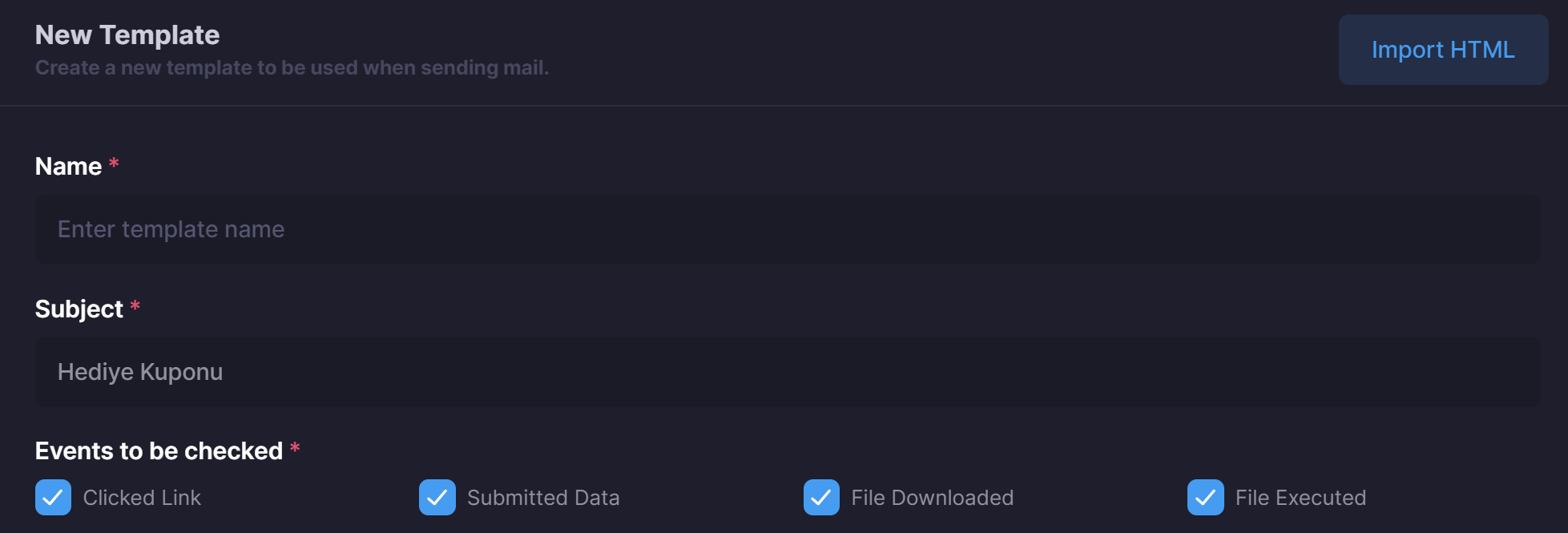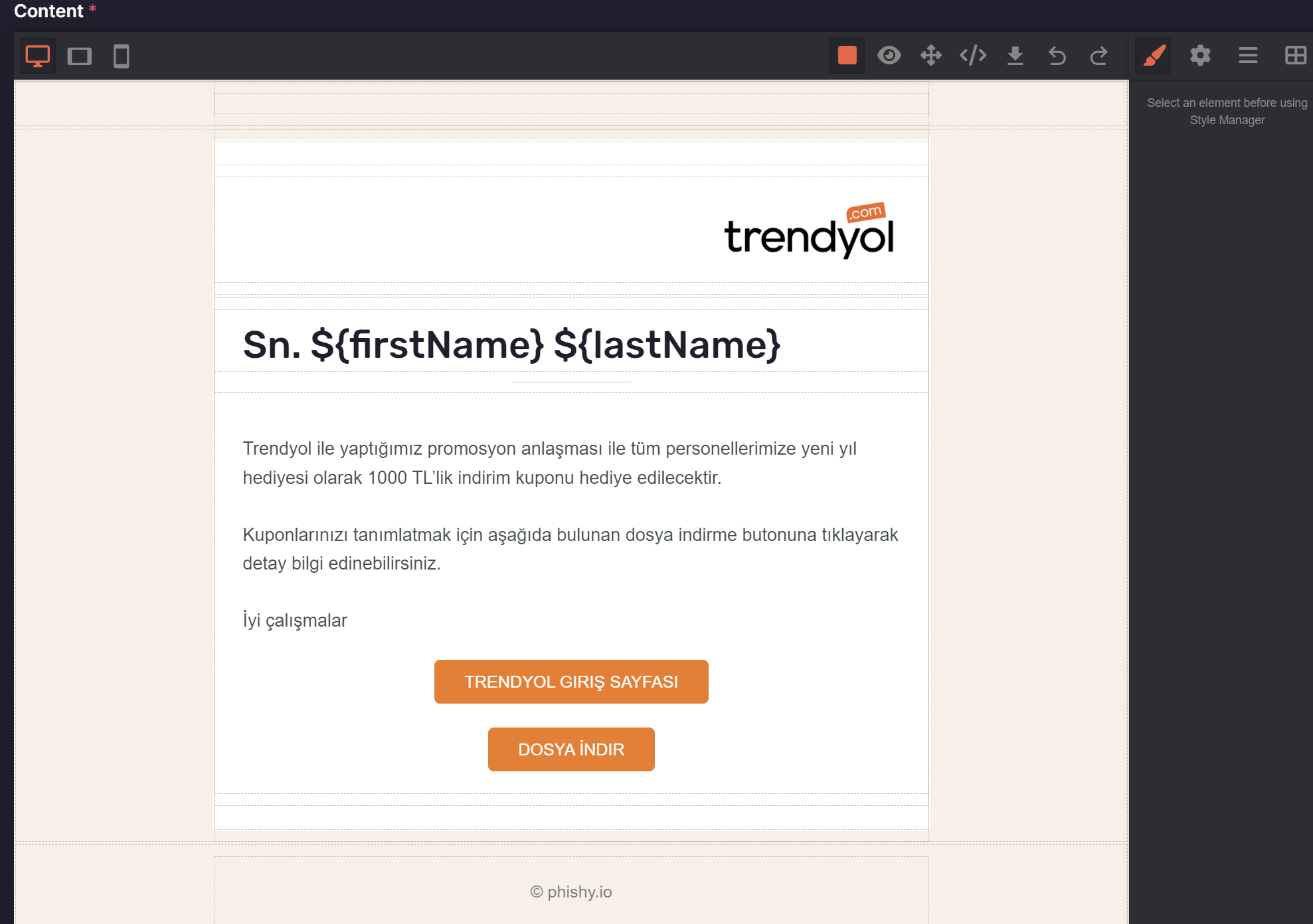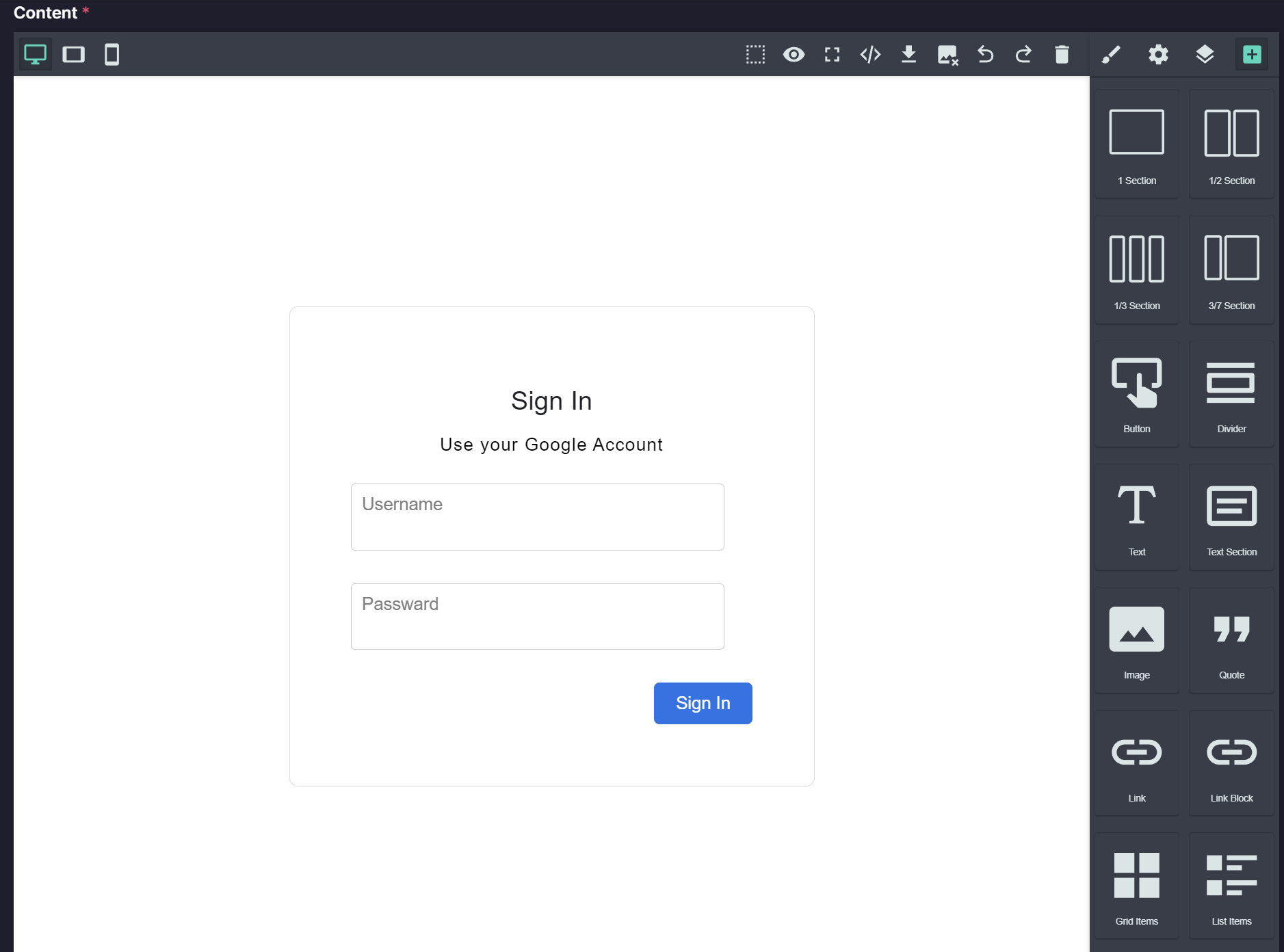Before creating phishing detection emails, it is important to determine your target audience. Which department or employees will receive these emails? Which types of phishing attacks are they more likely to be exposed to?
The answers to these questions will help you personalize emails and make them more effective.
📝 Template Setup
- Enter the name and subject of the email template. Here, you can give a subject line based on the type of campaign you will send to the target group. For example, you can use campaign types such as Trendyol lottery, coupon offer, and bank loan offer. If you want to use ready-made templates, you can make your selection from the template list page and make customizations.

- Under the “Events to be checked” section, you can select the ones you need. Make your selection based on the user actions you want to monitor.
- You can easily customize your template using the drag-and-drop feature. For example, you can make changes such as changing the background color, font, font size, and adding a link. You can edit the template to suit your needs.

- Create the landing page. You can customize from ready-made templates or create one entirely according to your needs. This page includes a field where you will ask users who click on the link to enter their information

- Go to the “Attachments” page under the email templates. Here, you can create a download link to a file that you can add to the email content.

- If you have additional files you would like to share in your email, you can add a new file by clicking the attach file button below the template and entering the attached file and filename.
 The template can be viewed easily on all devices, is responsive, and you can preview how it will appear on other devices from the top left corner of the template if you wish.
The template can be viewed easily on all devices, is responsive, and you can preview how it will appear on other devices from the top left corner of the template if you wish.
Tracking Sent Emails
You can easily access all your campaigns to monitor them and observe the performance of the emails you have sent. By clicking on the All Campaigns button under Campaigns, you can access the details of the campaigns you have created. From this page, you can track all campaign activities and access statistics. Here are all the activities listed below:- Email Sent: See how many people the email was sent to.
- Email Opened: See how many people opened and read the email.
- Clicked Link: See how many people clicked on the links within the email.
- Submitted Data: The number of people who submitted data into forms within the email.
- File Downloaded: See how many people downloaded email attachments.
- File Executed: See how many times downloaded files were executed.
